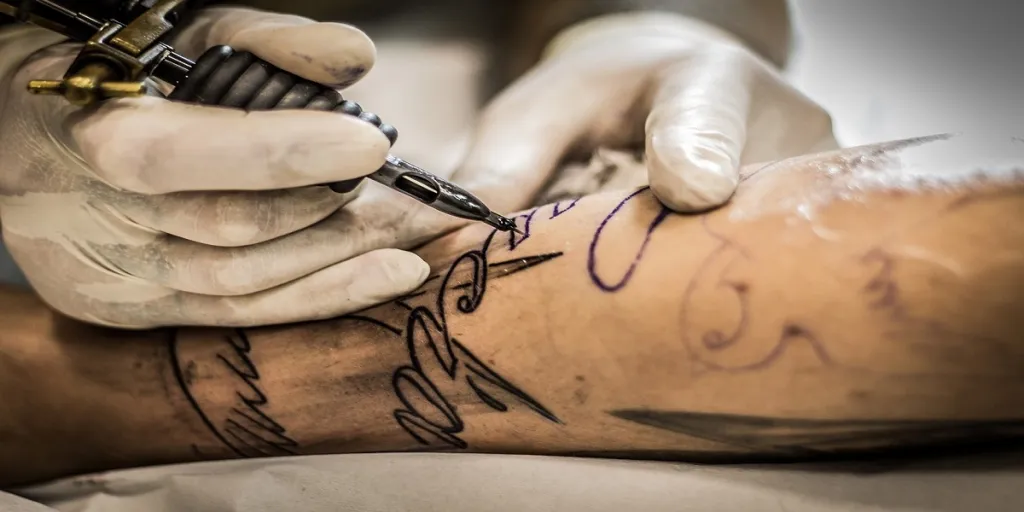Tattooing is an extremely delicate form of art. Since the results are not easy to erase, they require incredible precision, skill, and maximum hygiene/sanitary care. However, creating impressive tattoos is only possible when artists have the right tools.
No matter how skilled they are, their work would be less than optimal if they didn’t have a proper tattoo kit. Thankfully, this requirement has opened opportunities for businesses to target new and experienced tattoo artists. But they can’t make sales without knowing what to sell.
This article will explore six must-have products to add to a tattoo kit before selling in 2024.
Table of Contents
What’s the size of the global tattoo market?
6 tools every tattoo artist needs in their kits in 2024
Prioritize these products
What’s the size of the global tattoo market?
Experts valued the global tattoo market at US $1.78 billion in 2022. They also predict the market will boost to US $3.73 billion by 2030, registering an impressive 9.7% compound annual growth rate (CAGR) over the forecast period. These statistics show the global tattoo market has witnessed staggering growth and popularity in the past few decades.
The increasing demand for unique and customized designs to reflect individuality and personal experiences is the primary driver behind the market’s growth. This driver also led to a demand boost for skilled tattoo artists to create these custom designs.
In addition, technological advancements have largely impacted the tattoo industry. Now, artists can use improved tattooing equipment (like advanced tattoo machines and high-quality pigments) to make the process safer.
North America is the largest regional tattoo market, while Asia-Pacific is rapidly expanding with huge potential for the foreseeable future.
6 tools every tattoo artist needs in their kits in 2024
1. Tattoo machines
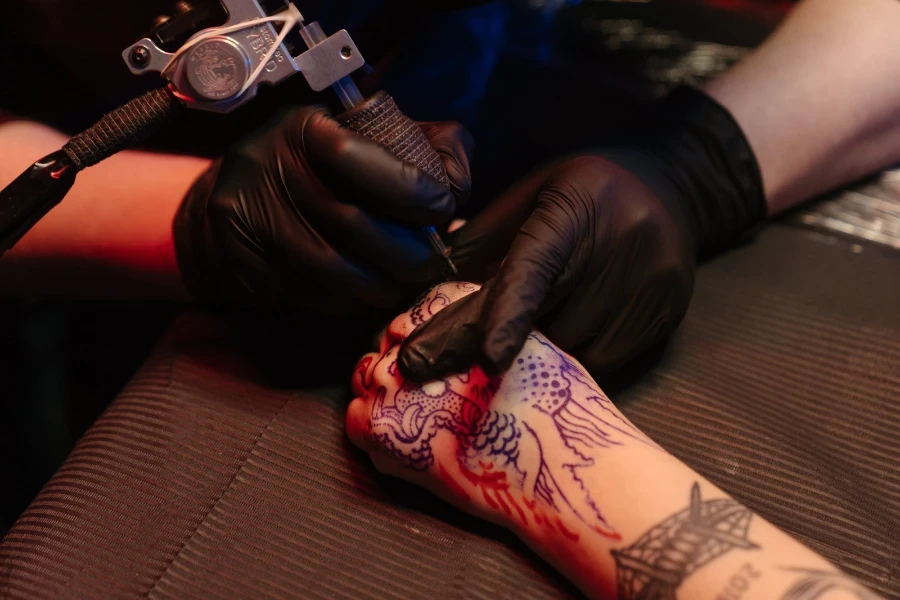
Tattoo machines are like an extension of the artist’s hands. Undoubtedly, the right one ensures they can produce quality work consistently. However, tattoo machines come in two variants with unique properties.
- Rotary tattoo machines: These are the classic tattoo machines, famed for their easy handling. Rotary tattoo machines also cause less cramping and are effortlessly lightweight. They also have quieter operations and can handle all tasks without switching machines.
- Coil tattoo machines: These are the most common tattoo machines. They give a signature buzz when artists use them, a hallmark of most tattoo parlors. Artists find coil tattoo guns easier to control, customize, and regulate. However, they must switch between shaders, liners, and color packers to do the related activities.
One can’t say one machine is better than the other because each variant supports different techniques and offers different results. However, coil tattoo machines may be more stressful than their rotary cousins.
2. Needles
If tattoo machines are like the artist’s hands, the needles are the paintbrushes. Consumers need them to create lines, shades, and color fillings. Like paintbrushes, needles come in various types, but the general ones include turbo, shader, flat, round, and magnum.
Some special types are also available for more advanced tattoo artists. These special needles include cartridges and textured needles.
Here’s a table showing more details about the five general needle types and what artists need them for:
| Needle type | Description |
| Turbo | Tightly packed needles for thick lines, bold shading, and color packing. |
| Shader | Ideal for shading, filling, and color blending. Shader needles also offer smooth, even applications. |
| Magnum | Good for filling large areas, drawing bold lines, and shading. These needles also provide efficient ink saturation. |
| Flat | Great for precise lines, outlining, and lettering. They’re the perfect needles for creating clean, sharp edges. |
| Round | This is the most versatile needle type. Artists can use it for lines, shading, and color blending. Round needles also offer soft, diffused effects. |
Note: Each needle type can also have subtypes. For instance, artists may want round liners, magnum shaders, flat shaders, and round shaders.
But that’s not all. Each type offers various sizes to fit the artist’s application. More importantly, sellers can know the needle size by the gauge number.
Check the table below for the most common needle sizes across all needle types:
| Needle size (gauge) | Description |
| 8 gauge (0.25 mm) | These are the largest needles, perfect for outlining and shading. |
| 10 gauge (0.30 mm) | These needles are also great for outlining and shading but are slightly smaller than their 8-gauge counterparts. |
| 12 gauge (0.35 mm) | These needle sizes are perfect for filling in larger areas with color. |
| 14 gauge (0.40 mm) | These sizes are ideal for fine-detail work like lettering and portraits. |
| 18 gauge (0.50 mm) | These are the smallest needle sizes and only work for fine detail, like hair and eyelashes. |
3. Grips, tubes, and tips
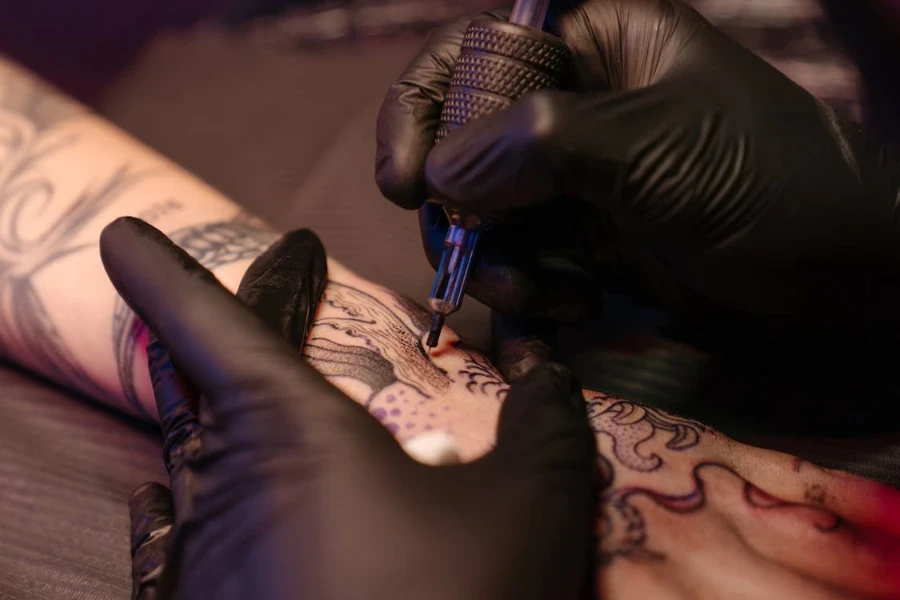
No matter how steady artists believe their hands are, they’ll need a grip. It helps reduce the risk of their tattoo guns slipping while in use. However, the best type of grip depends on the consumer’s preference. They may prefer disposable models or reusable metal ones.
On the other hand, tips and tubes are necessary for accurately inserting needles into tattoo machines. They also help ensure optimal ink flow and make cleaning safer. However, businesses must offer easy-to-clean tips and tubes to avoid damaging the artist’s carefully selected needles.
4. Barrier gels and transfer papers
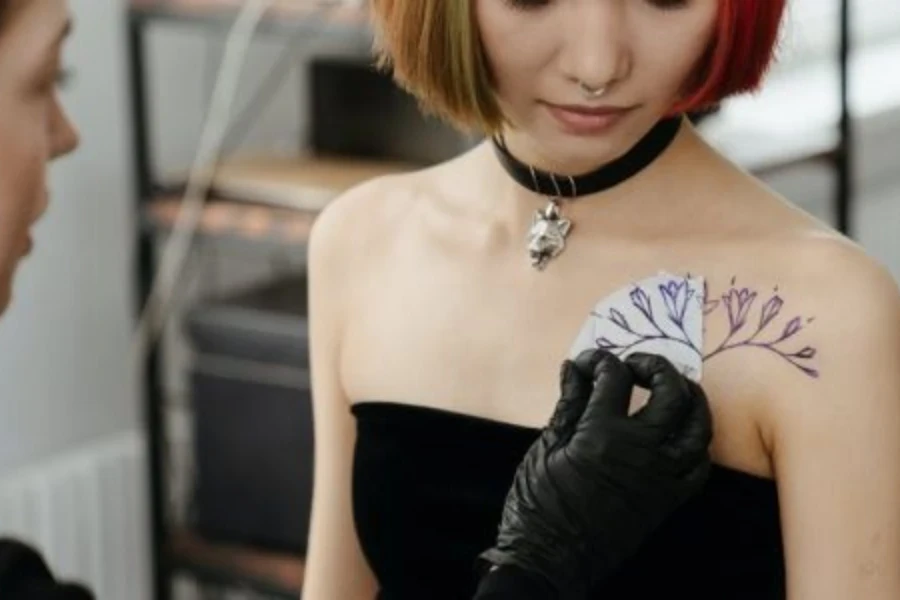
Most artists often forget to add barrier gels when creating their tattoo supply lists. But don’t be fooled—they are incredibly beneficial products that make the tattooing process easier. Barrier gels help seal stencils to the client’s skin, reduce needle burn, improve ink saturation, and decrease heat.
More importantly, barrier gels also help reduce glare. While it won’t benefit the client, glare reduction will help reduce strain on the artist’s eyes, keeping them healthy for longer.
Transfer papers are another essential product to add to tattoo kits. They help artists get that perfect outline before starting the tattooing process. It also lets them experiment with different placements before making the art permanent.
5. Tattoo ink and ink cups
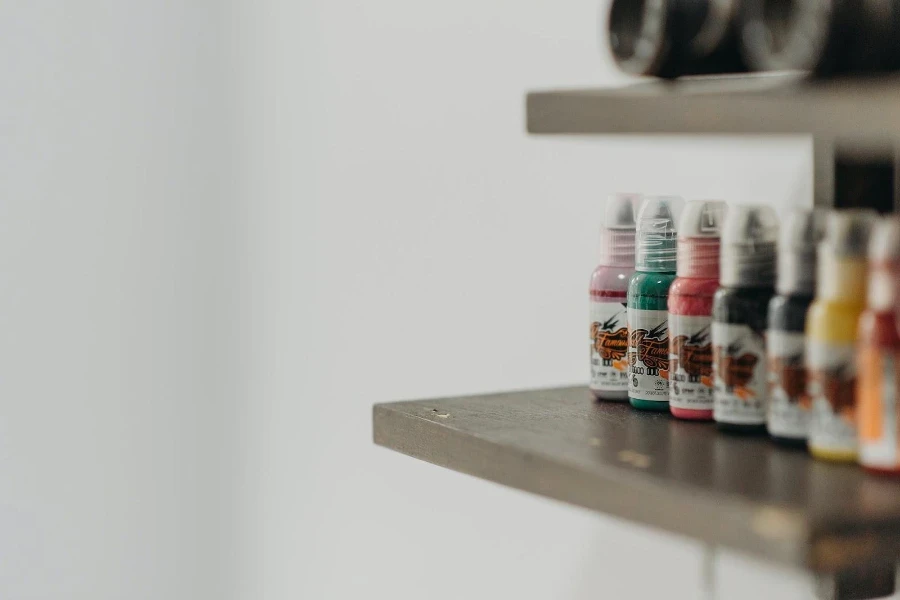
Tattoo inks divide the consumer base into artists who prefer making their own ink and those who buy full sets. While making tattoo ink requires mixing and thinning, most full sets are ready to use.
Interestingly, most tattoo artists buy full sets to avoid the ink-making hassle. And offering full sets gives consumers more variety to work with.
Whether artists prefer mixing inks or buying full sets, they’ll need a way to hold it while they work. That’s where ink cups come in. They help keep tattoo inks close for the next dip.
Additionally, ink cups come in various sizes, from small to large. Consumers often need different sizes to change them to hold enough ink for their client’s desired tattoo size.
6. Sterilization equipment and medical supplies
No tattoo kit is complete without some sterilization equipment and medical supplies. Artists should always prioritize their client’s health, well-being, and happiness, so they’ll need the following supplies in their tattoo kit:
- Needle cleaners
- VaselineSurface sterilizers
- Sterile ointment
- Gloves
- Numbing creams (for overly sensitive skin)
- Cleaning set for tubes and tips
Prioritize these products
The tattoo industry is growing tremendously! The stigma surrounding body art is gone in this modern era, leading more people to get tattoos for various reasons. The butterfly effect of the growing tattoo industry also sees more tattoo artists popping up and demanding tools to run their businesses.
As a result, sellers can grab this opportunity by catering to the surging demand for these amazing products. Consider offering tattoo machines, needles, grips, tubes, tips, barrier gels, and tattoo/ink cups as sets or standalone items to fully leverage the tattoo market in 2024.
